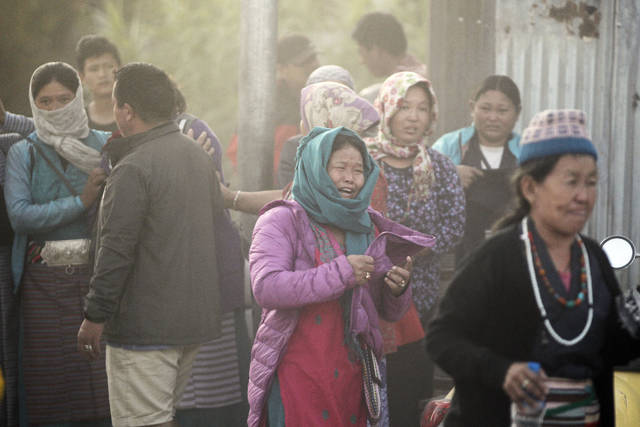KATHMANDU, Nepal — The nine climbers who died during the worst disaster on a Nepal mountain in recent years included the first South Korean to summit all 14 Himalayan peaks over 8,000 meters without using supplemental oxygen.
An official from the South Korea’s Corean Alpine Club said the bodies of Kim Chang-ho and four other South Koreans who were killed will arrive in South Korea on Wednesday. Four Nepalese guides also were killed when a storm swept the climbers’ base camp on Gurja Himal mountain Friday.
Rescuers had retrieved the climbers’ bodies on Sunday after weather cleared. The body of one of the guides was taken to his village, while the eight others were flown to Kathmandu.
“It was the worst mountaineering disaster in Nepal in recent years and an unimaginable one,” said Rameshwor Niraula of Nepal’s Mountaineering Department, which issues climbing permits and monitors expeditions.
Niraula said officials were still gathering details of what exactly happened but from what rescuers described, the climbers were blown over by the blast of the blizzard-like wind conditions.
One Korean member of the climbing team had become ill and was in a village far below the base camp during the storm.
The CAC official, who didn’t want to be named because she wasn’t authorized to speak to reporters, identified the other South Korean victims as Yu Yeong-jik, Im Il-jin, Jeong Jun-mo and Lee Jae-hoon.
Yu was reportedly in charge of equipment for Kim’s climbing team. Im was a filmmaker who specialized in documentaries of mountain climbers. Yonhap news agency said senior CAC member Jeong wasn’t part of Kim’s team but was visiting them when the accident happened.
It was the deadliest climbing disaster in Nepal since 2015 when 19 people were killed at Mount Everest base camp by an avalanche triggered by an earthquake that devastated the country. The previous year, an avalanche above Everest’s base camp killed 16 Nepalese Sherpa guides.
The Himalayan range includes all 14 of the world’s peaks that rise above 8,000 meters, and only a few dozen climbers have made verified, successful ascents of them all. Kim achieved his feat in 2013.
South Korean President Moon Jae-in, an amateur hiking enthusiast who visited Nepal in 2016, expressed his condolences, saying the victims displayed a “great spirit that’s about respecting nature while simultaneously trying to overcome it.”
“A snow storm has taken the nine climbers into the mountains forever, but their bravery and fighting spirit to break out a new route can never be buried,” Moon wrote on Facebook on Sunday while on a visit to France.
Santa Lama of the Nepal Mountaineering Association, who helped with coordinating the rescue, said since all nine people at the camp were killed and no surviving witnesses it was difficult to say what exactly happened or when.
The climbers were also attempting to scale a 7,193-meter (23,590-foot) peak which is not among the highest, the most difficult or popular mountain to climb in Nepal.
Grieving family members gathered at the Tribhuvan University Teaching Hospital in Nepal’s capital where the bodies were to be autopsied before being handed to their families.
South Korea’s Foreign Ministry told reporters strong winds during the storm blew the victims from their base camp off a steep cliff. Word of the destruction got out Saturday morning, and helicopters were sent. They were not able to land due to the continuing bad weather but spotted the bodies, which were retrieved Sunday.
They were issued permit to climb the peak during the autumn climbing season. Spring and autumn are the optimal climbing seasons in Nepal in between the harsh winter and summer monsoon.
The CAC official said a Korean Air flight carrying the bodies of the climbers will arrive at South Korea’s Incheon International Airport early Wednesday.
———
Associated Press writer Kim Tong-hyung in Seoul, South Korea, contributed to this report.




